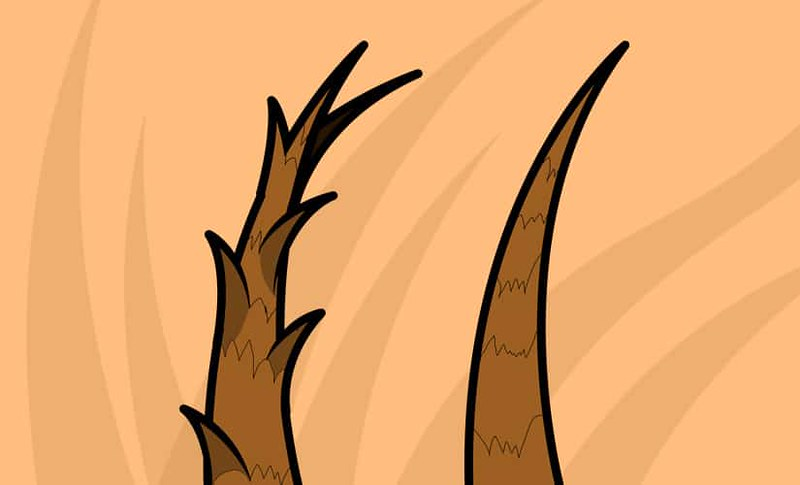16 Different Types of Split Ends
There exist an astounding 16 distinct varieties of split ends, ranging from a conventional split to a feather split! Do you want to recognize them by yourself? Continue reading to find out more.

- Conventional Split: Hair divides into two sections, resembling a “Y” shape.
- Infant Split: Exhibits signs of an impending split end, but the hair hasn’t fully separated yet.
- Triple Split: Hair separates into three segments, indicating a triple split.
- Double Y Split: A strand divides into two, then splits again from one of the branches.
- Partial Split: Hair weakens at a specific point but hasn’t fully split.
- Extended Split: Shows initial signs of a split end, with the shaft starting to separate at a specific point.
- Deep Split: Hair splits into two with the “Y” shape higher up on the shaft.
- Taper: Cuticle begins to peel away, often due to chemical damage.
- Thickening: Ends remain intact, but the hair’s texture starts to change.
- White Spots: Severe chemical burns can result in visible white spots on the hair shaft.
- Right Angle: Hair starts to bend at an angle.
- Offshoot: Hair thickens along the shaft and reconnects.
- Crimp: Hair appears wrinkled, usually from excessive heat styling or chemical treatments.
- Branch Split: Multiple segments of the shaft come apart, resembling a tree and its branches.
- Feather Split: Resembles a feather with multiple splits along one side of the shaft.
- The Knot: Common among curly-haired individuals, it’s not a split end but can lead to more tangles.
Myths vs. Reality: What Causes Split Ends?
Everyone wants to know what causes split ends in the first place, in addition to knowing how to fix them. In actuality, there are numerous variables that can harm your hair. These are a few of the most typical ones:
- damage from heat caused by blow drying, curling, or straightening your hair.
- harm caused by chemicals while bleaching, straightening, or perming your hair.
- without treating your split ends with a heat protectant product.
- sleeping with wet hair or vigorously brushing it.
- avoiding frequent trimmings.
- washing your hair excessively.
The natural moisture in your hair is evaporated by hot equipment, making your locks fragile and prone to breaking. Chemical hair treatments, such as professional straightening, Balayage, and highlighting, can also cause damage to your hair. If you’re chemically treating your hair, discuss your problems and any necessary treatments with your hairstylist.
To assist you maintain the best possible condition for your hair, your hairdresser might be able to suggest hair treatments and other DIY fixes.
